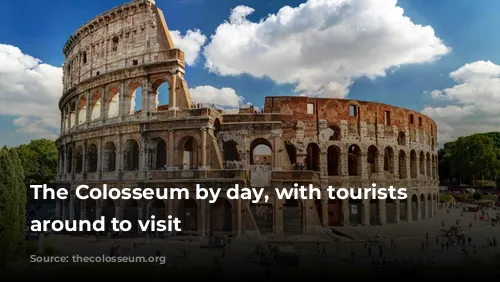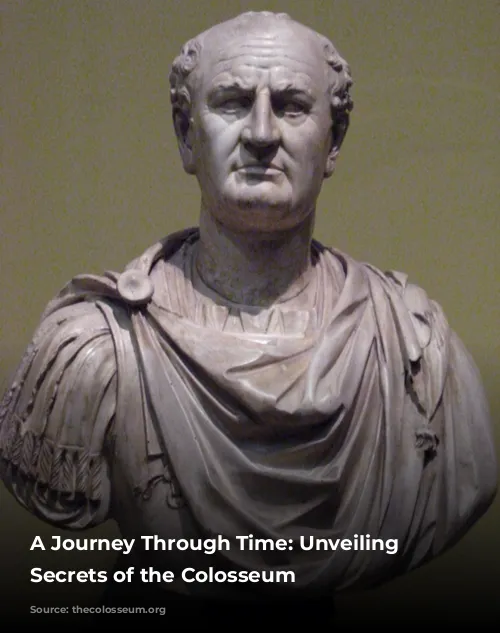The Colosseum, a monumental structure that stands as a testament to the grandeur of ancient Rome, holds within its weathered walls a rich tapestry of history spanning nearly two millennia. It’s a place where the echoes of gladiatorial combat, thrilling hunts, and gruesome executions still resonate, painting a vivid picture of a bygone era. Join us on an exciting exploration of this iconic landmark and discover fascinating facts that will leave you in awe.

The Colosseum: A Legacy of Construction
When was the Colosseum built?
Construction of this architectural marvel began in 72 AD under the reign of Emperor Vespasian, a pivotal moment in Roman history. The Colosseum was a symbol of imperial power and a means to appease the Roman populace after the turmoil of Nero’s reign. Although Vespasian passed away before its completion, his sons, Titus and Domitian, continued the project, ensuring its grand vision came to fruition in 80 AD.
Who built the Colosseum?
The Colosseum’s construction was a colossal undertaking, relying on the skilled hands of Roman engineers and craftsmen. However, the laborers who toiled tirelessly under the scorching sun were primarily Jewish slaves. They were forcibly transported to Rome following the devastating Jewish-Roman War, with estimates suggesting that between 60,000 and 100,000 individuals were involved in the construction of this monumental arena.
A Glimpse into the Colosseum’s Heart
What lies beneath the Colosseum?
Beneath the vast arena floor lies a complex network of tunnels and chambers known as the Hypogeum. This hidden world was a bustling hub of activity, housing gladiators, animals, and prisoners awaiting their fate in the arena. Eighty vertical shafts connected the Hypogeum to the arena above, allowing for the swift and dramatic deployment of gladiators, animals, and even elaborate stage elements during the spectacles.
The Colosseum: A Spectacle of Entertainment and Brutality
What types of spectacles were held in the Colosseum?
The Colosseum’s purpose was to provide entertainment for the Roman masses, and its history is marked by a series of blood-soaked spectacles. The most renowned were the gladiator fights, brutal battles that captivated the audience with their raw power and intensity. Alongside gladiatorial combat, the Colosseum hosted hunts, where gladiators faced off against dangerous wild animals, and executions, often carried out by these beasts. Early on, the arena even hosted Naumachia— staged naval battles that involved flooding the arena.
How many people could the Colosseum seat?
The Colosseum was designed to accommodate a massive crowd, with an estimated seating capacity of 50,000 to 80,000 spectators. This vast arena was a microcosm of Roman society, where citizens from all walks of life gathered to witness the spectacle and cheer for their favored gladiators or hunters.
Were Gladiator Fights as Bloody as They Seem?
Although the popular imagination often paints a picture of unbridled violence, gladiator fights were actually more structured than many believe. Gladiators were categorized based on their size, fighting style, and experience, and referees and doctors were present to oversee the fights. Many matches did not end in death, and successful gladiators could achieve fame and fortune. However, this doesn’t mean the fights were bloodless—a significant number of gladiators perished in the arena, making these events a brutal reality for many.
The Colosseum: A Legacy of Transformation
How has the Colosseum been used throughout history?
The Colosseum’s history is not limited to its brutal spectacles. After the decline of gladiatorial combat, the arena transitioned into a variety of roles. It served as a cemetery, a place of worship, and even a fortified castle. It’s fascinating to see how this grand monument has adapted to the changing needs of different eras, reflecting the resilience and adaptability of human civilization.
The Colosseum: A Beacon for Modern Times
Why is the Colosseum such a popular tourist attraction?
Today, the Colosseum is a symbol of ancient Rome, a must-see destination for millions of visitors each year. Its imposing structure, steeped in history and legend, continues to captivate and inspire awe. Its enduring appeal lies in its ability to transport us back in time, allowing us to glimpse the grandeur of the Roman Empire and the lives of the people who walked its ancient streets.
The Colosseum: A Monument for the Ages
The Colosseum stands as a testament to the enduring power of human creativity and the complex nature of history. It’s a reminder of the Roman Empire’s grandeur, the brutality of its spectacles, and the resilience of a monument that has withstood the test of time. Whether you’re fascinated by the gladiatorial battles, the architectural marvel, or the echoes of a bygone era, the Colosseum offers an unforgettable journey through time.
